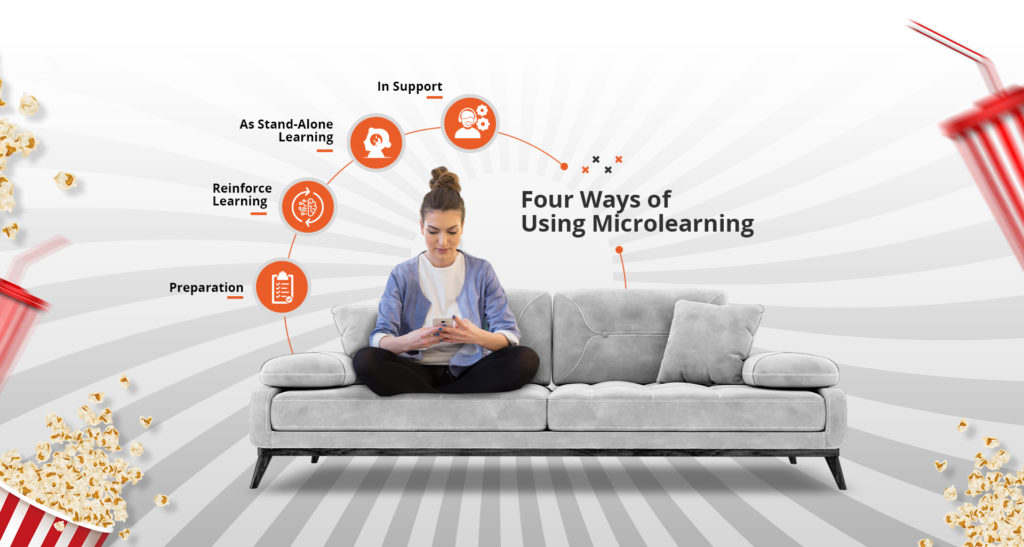The appetite of our employees is not the same therefore, we must not provide them the same bland food (for thought).
It’s time to put together an appetizing platter and create learning opportunities that are useful and valuable.
We need a truly blended design approach that engages employees while answering their curiosity and developing their knowledge. To do this, we need to turn learning and development interventions into continuous learning chunks, thereby giving employees the option of learning while they are working.
When we are concerned about our employees as individual people rather than just their performance at work, we need to accelerate change. Deloitte says that there are “three powerful concepts—purpose, potential, and perspective—that can point the way towards the future of human capital, empowering leaders to re-architect work in ways that lead to new outcomes and new value.”
No, we are not saying traditional training is bad or non-essential, but we are going to talk about the hidden potential of microlearning to bring the required changes in knowledge, skills, and behaviors. These can also be linked to larger interventions for holistic development.
The modern learner and microlearning
The attention span of an average employee can be challenging, as they are constantly bombarded with distractions. When training becomes overwhelming and creates stress, a bite-sized approach will encourage learning.
Josh Bersin talks about a paradigm shift in learning in his “Learning in the Flow of Work®”.
 Employees spend 1% of their time learning—Bersin by Deloitte
Employees spend 1% of their time learning—Bersin by Deloitte
Microlearning is not a new concept; it has always been here. However, we are excited to talk about it now as a stand-alone topic that delivers short bursts of content for learners to study at their convenience. Microlearning content can take any form, from text to full-blown interactive multimedia, as long as it is short.
Here are some microlearning content examples:
- Text-based resources (references, reviews, phrases, etc.)
- Images (infographics, illustrations, etc.)
- Videos (animations, screencasts etc.)
- Audio (short snippets of speech or music, podcasts, etc.)
- Tests and quizzes
- Games (simple single screen challenges)
- Digital learning (SCROM videos in LMS, etc.).
How to use microlearning in a L&D strategy
Out of the many memory consolidation techniques, “chunking” as a concept allows the brain to increase the supply capacity of the short-term memory; however, each chunk must be meaningful to the individual. Microlearning is a near-ideal instruction model that can be cleverly used for many kinds of training.
Here are four ways microlearning can be used:
- Preparation – prework for a training program
- Follow-up – to reinforce a concept
- As stand-alone learning – for a single non-complex concept
- In support – performance support learning.
Carla Torgerson, during a video cast with IDIODC, suggested following a matrix approach when designing microlearning elements.
| Text-based | Images | Video | Audio | Digital learning | |
| Preparation | |||||
| Follow-up | |||||
| Stand-alone | |||||
| In support |
Busy schedules and short attention spans impact digital learning spaces. The data-consuming behavior of our employees has significantly changed, especially in the last two years. Therefore, we need to set up engaging learning content systems that give our employees bingeworthy appetizers such as a microlearning platform that is educational but feels more like a mix of Twitter and Instagram.
Even though bite-sized learning content has become more and more popular over the last few years, it actually has a long history, long before computers became part of our daily lives. Many of Sant Kabir Das’ couplets were used to create value-based education. Do you remember your nursery rhymes and short stories? Those were basic attempts to reinforce behavioral competencies, leadership qualities, and virtues.
Are we focused on creating learning opportunities that employees find useful and valuable?
G-Cube has created around 40+ microlearning solutions in the last three years where we used these nuggets in various elements of L&D strategy.
If you would like to see some examples, please feel free to contact us.








